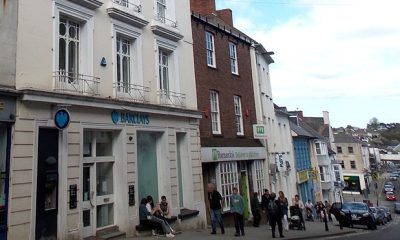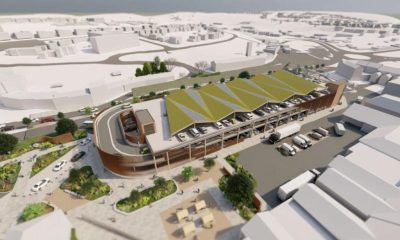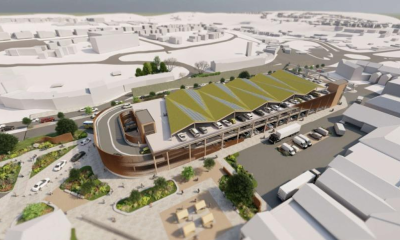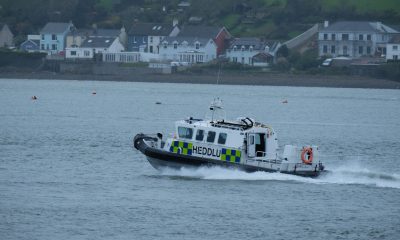News
Pembroke Castle excavation completed
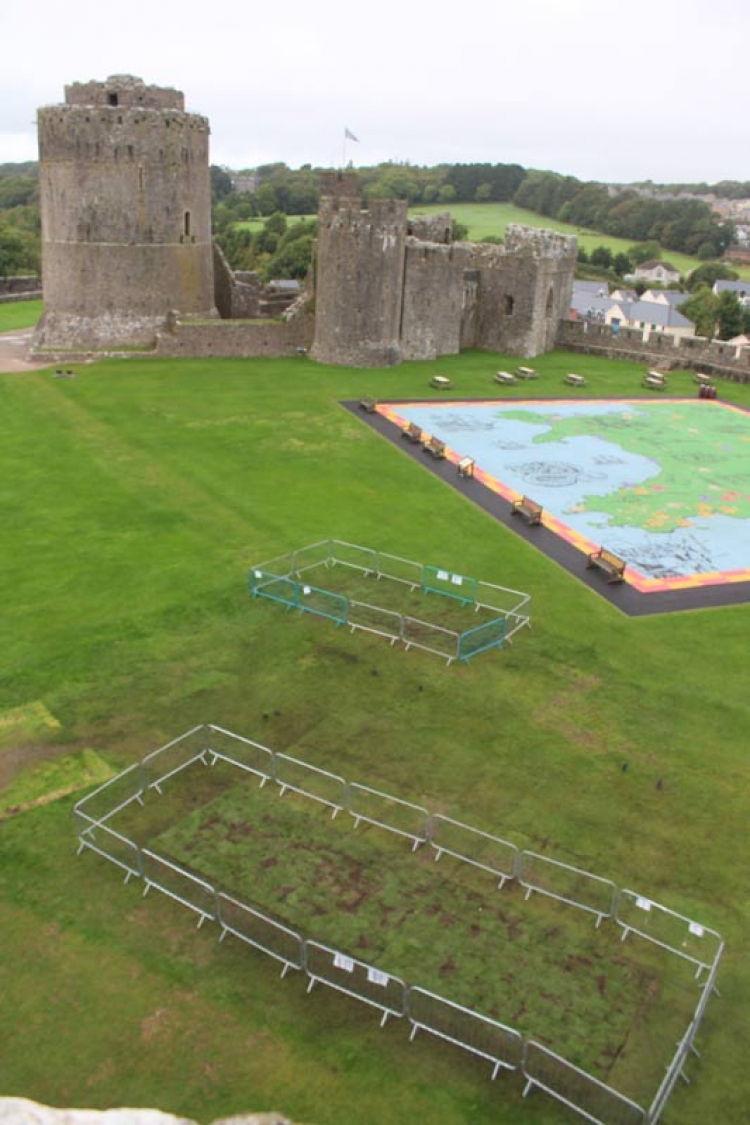
THE TWO WEEK archaeological excavation of Pembroke Castle has finished, with much information and material gathered to be analysed.
Dyfed Archaeological Trust, funded by the Castle Studies Trust, started the excavation on September 3, the first at the site for over 70 years. The excavations and topographic survey aimed to further advance the understanding of one of Wales’ and the UK’s most iconic castles.
The large outer ward has been an empty space since at least the eighteenth century, yet aerial photographs in 2013 revealed parch marks detailing the outline of a possible late medieval double-winged hall house. This was further confirmed by geophysical surveys carried out by Dyfed Archaeological Trust, funded by the Castle Studies Trust, in 2016. Such buildings are unusual in castles, particularly in the outer ward, generally associated with more lowly structures. This may suggest that the ward had been ‘gentrified’ matching historical accounts which place the birth of Henry Tudor in the outer ward: it may have occurred within this very building. It is thought more likely that he was born in what was a modern residence for the time, than in a guard tower on the castle walls.
Under the guidance of well-known castle expert Neil Ludlow, Dyfed Archaeological Trust excavated two trenches to understand more about the form, date, context and function of the remains. Additionally, they carried out a topographic survey to make a detailed record of the layout of the castle.
Neil Ludlow said prior to the excavation: “The geophysical survey carried out in Pembroke Castle, in 2016, funded by the Castle Studies Trust, showed a large, winged building that resembles, in plan, a late-medieval manor house. This is an unusual find within a castle, and has additional significance at Pembroke as the possible birthplace of King Henry VII.
“But this is still guesswork, as nothing else about the building is known. All we really know is that it was excavated in the 1930s without records. Thanks to the support of the Castle Studies Trust, some of these questions will be answered as well as learning more about later medieval high status living.”
Pembroke Castle stands on a site that has been occupied since at least the Roman period. Norman lords founded the first traditional castle there in the 11th century. Henry Tudor was born at Pembroke Castle on January 28 1457. On August 22 1485, Henry seized the English crown, defeating King Richard III at the Battle of Bosworth Field, in the culmination of the Wars of the Roses. He was the last king of England to win his throne on the field of battle, and was crowned Henry VII, first monarch of the House of Tudor.
On the first day of the excavation, a possible wall was quickly made visible in trench one, and trench two revealed a former path surface through the castle grounds and the suggestion of an outer wall. Bone, pottery, brick and tile were found, most from the early 20th century but with some late medieval and post medieval material as well.
The second day saw a second wall revealed close to the east, yet the walls appeared too close together to be associated with the walls seen on the parch marks. Large areas of mortared stone patches were revealed to the west, suggesting walls, and the outer wall of the building in trench two started to become exposed as well. A large amount of oyster shell was collected from the site as well as more pottery and bone.
On the third day, the full width of the wall in trench two was made visible at its western end, at roughly one metre wide, suggesting a substantial structure. In trench one the two walls located close together were thought to represent the cess pit.
The fourth day brought wind and rain, but did not deter progress, with more backfill being removed from both trenches to reveal the surviving walls of the structure. Day five saw good progress, removing almost all of the remaining backfill from trench one to reveal a rubble collapse layer – pre-dating the 1930s excavations. The large mass of masonry is thought to be a possible curving stair, whilst the top of the large wall in trench two was fully exposed.
The sixth day saw further poor weather, and so the focus was on washing and sorting the cleaned finds for bagging up. By the afternoon the weather improved somewhat and the team were able to start the removal of layers of building collapse within the trenches.
Members of the Castle Studies Trust who are funding the investigation visited the site on day seven to check on progress. Work continued in trench one revealing an area of potential bedrock within the possible small room at its eastern end. Collapse material has been removed from trench two to reveal a spread of mortar and slate, potentially a collapsed roof within the structure.
The eighth day saw a sample excavation of the small room in trench one completed, exposing more of a large outcrop of limestone bedrock in its base. Cadw gave permission to slightly extend the trenches and this was started in the afternoon.
The ninth day saw trench two extended to expose the return of the large wall in the northwestern corner of the building, which again appears to be a substantial wall, suggesting a tall building. The extension in trench one was also continued, but no continuation of any walls were seen, although a deposit of rubbish was revealed containing large quantities of roofing slate, oyster shell, bone and quite a few pieces of glazed tile.
The tenth day saw the return of the wall in the second trench fully exposed, the cobbled surface on the outside of the wall cleaned and a rough stone slab floor adjacent to the steps was exposed. They finished taking the eastern extension of the trench down to the correct level, and commenced excavation of the possible cess pit, which is being sampled for environmental analysis.
Day 11 saw the recording and site survey start, as they finished excavation of a small test pit in trench one, onto a second possible stone slab floor. The east end of the trench was found to contain a mix of material, with pottery dating throughout the medieval and later medieval period, as well as three shards of Roman pottery too.
Day 12 was spent undertaking further recording and drawing in the two trenches as the work drew to a close.
The recording was finished on the thirteenth day, as they started backfilling in the afternoon.
In between the volunteers stopped to watch the 1st Battalion Royal Welsh being given the freedom of Pembroke. The last day saw both trenches were backfilled and re-turfed by the end.
Community
County Hall to offer space for community banking
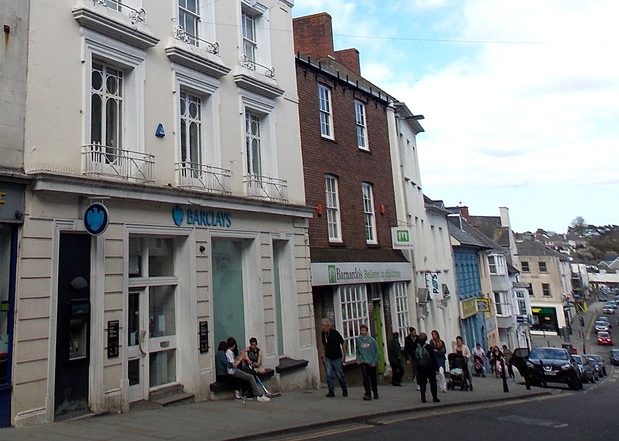
A CALL for Pembrokeshire County Council to potentially change its banking arrangement with Barclays, after it closed its Haverfordwest branch has been turned down, but County Hall is to offer space for community banking.
Barclays Bank, on the town’s High Street, is to close on May 10.
The council has had a banking services contract with Barclays since 2013.
Councillor Huw Murphy, in a notice of motion heard by Pembrokeshire County Council’s Cabinet meeting of April 22, asked the council to review its banking arrangements with Barclays following the announced closure.
e said the loss of a branch “not only impacts upon town centres and businesses but also disproportionately impacts the elderly who are less likely to embrace on-line banking options”.
A report for Cabinet members said, in terms of the impact on Pembrokeshire residents, Barclays has said that it is “not leaving Haverfordwest and [will] continue to provide face-to-face support for those who need it” via community locations.
Two options were presented to Cabinet: to retender the banking services contract, and, the favoured, to work with Barclays to ensure a community location is set up in Haverfordwest.
Members heard the costs associated with moving to a new banking service provider could be in excess of £50,000.
For the second, favoured option, members heard Barclays was in discussions with the council about a location for potential community banking.
Cabinet Member for Corporate Finance Cllr Alec Cormack, after outlining the risks in the report for members, and moving the notice be not adopted, said he had “considerable sympathy” with Cllr Murphy’s notice.
He told councillors there was a glimmer of light for banking arrangements in the county, with an agreement now signed for two ground floor rooms at County Hall, Haverfordwest, to be used for community banking.
From April 25, the rooms will be available on Wednesdays, Thursdays, and Fridays, members heard.
Cabinet Member for Planning & Housing Delivery Cllr Jon Harvey also said he had “a lot of sympathy” for the motion, adding: “It’s excellent news a deal has been struck to occupy the ground floor rooms three days a week; hopefully this will mitigate, to a certain amount, the closure.
“If we can work with the respective banks to get a community-type approach let’s move forward.”
News
Haverfordwest interchange: Next stage of £19m project backed

The second stage of building Haverfordwest’s near-£19m transport interchange has been backed, with senior councillors hearing it could cost the council more to not support it.
The transport interchange, which includes an integrated bus station and construction of a new multi-storey car park, is part of a wider series of regeneration projects in the county town.
The total cost of the scheme in the approved budget is £18.881m, £1.987m from Pembrokeshire County Council; the remainder, £16.894m, from an already-awarded Welsh Government grant.
To date, £3.425m has been spent on advanced works, including the demolition of the old multi-storey car park and a temporary bus station.
Members of Pembrokeshire County Council’s Cabinet, meeting on April 22, were recommended to approve the award of the Stage 2 construction contract for the Haverfordwest Transport Interchange.
The report for members listed two simple options for Cabinet, to authorise the award of a contract, recommended, or to not.
For the latter it warned: “It is envisaged Welsh Government will withdraw the funding awarded and the council would need to repay grants received to date; £10.322m has been received to date of which £3.376m has been offset against expenditure.”
It added: “Cost to cease this project could cost PCC more in terms of grant repayment and any capital work required to make good. PCC match contribution for the project is forecast as £1.987m of the £18.881m.”
Planning permission for the interchange was granted in 2022, with a temporary bus station constructed that year and the old multi-storey building demolished in 2023.
That year, members of the county council’s Cabinet agreed a temporary car park will be sited on the demolished remains of the old multi-storey car park until the Haverfordwest Public Transport Interchange – delayed as no compliant tender had been found at the time – is built.
Speaking at the meeting, Deputy Leader Cllr Paul Miller said: “The interchange is an important part of the regeneration of Haverfordwest, it will not regenerate Haverfordwest on its own, it is part of a wider process. The alternative to us being engaged is we simply allow it to decline and fail.”
He said the interchange was about “making it easier to visit Haverfordwest,” making parking provision “really straightforward, making it easy and convenient as possible”.
Cllr Miller said not progressing with the scheme would risk the grants already obtained, meaning the council could potentially foot the bill for costs to date, at a greater level than progressing.
He said the cost options were a near-£2m subsidised council involvement for the whole scheme or the £3m-plus spent to date if the scheme was ended, which would leave the car park as it is now.
“It’s pretty reasonable that if they give us the money and we don’t build a transport interchange they’ll be looking for that money back,” Cllr Miller said.
He said previous figures from parking revenue – back in 2019 – amounted to £100,000 a year; and could be expected to at least double on a “like-for-like” basis following the increase in parking charges.
Members, after a private and confidential session over the actual contract details, agreed to proceed with the scheme, awarding the contract to Kier Construction Western and Wales.
Charity
RNLI prepare for summer with medical training exercise in Pembrokeshire
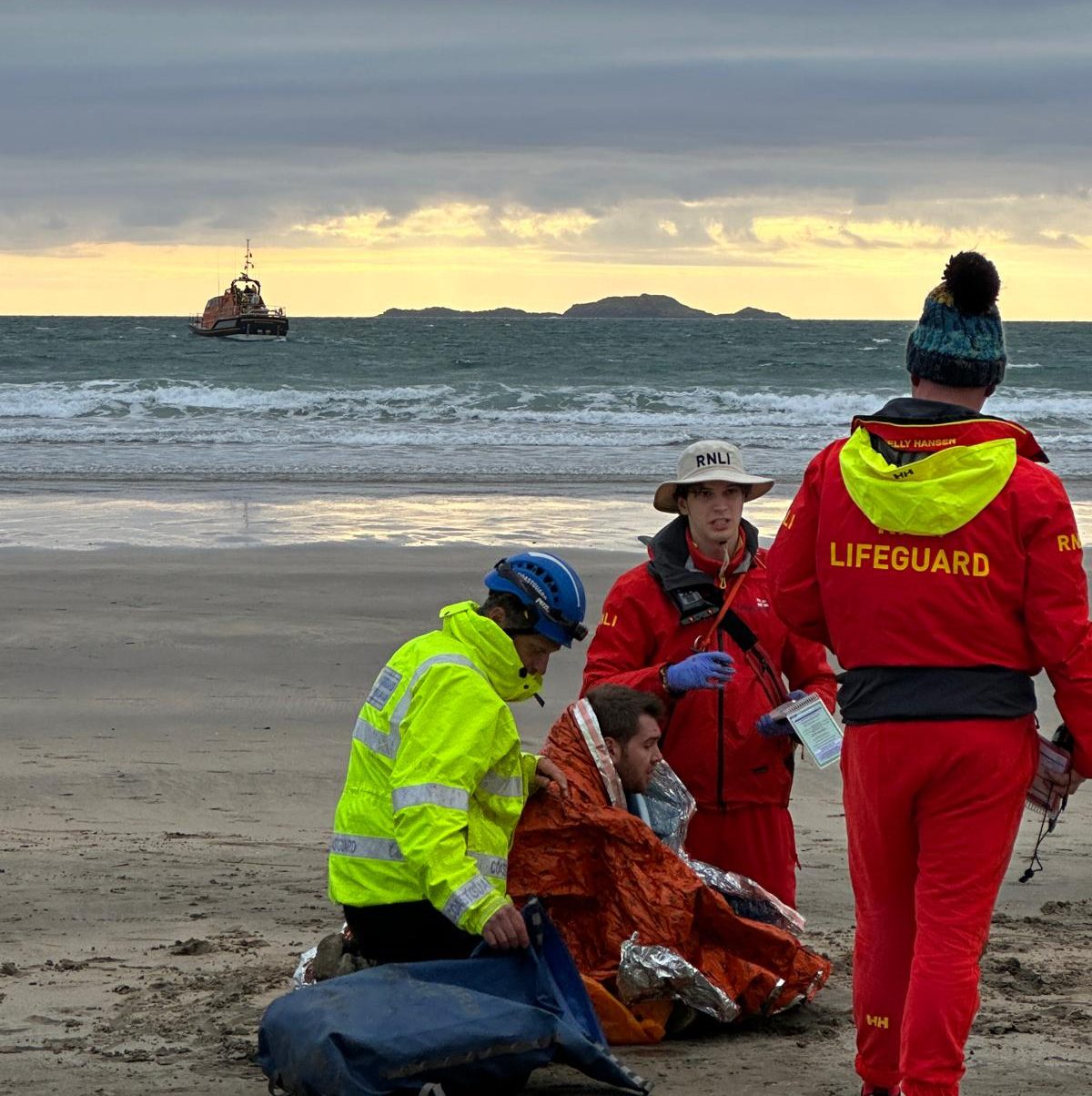
RNLI lifeguards from the north Pembrokeshire team, volunteers from St Davids RNLI and St Davids Coastguard Rescue Team came together at Whitesands beach on Thursday (18 April), for a multi-agency medical training exercise. Pembrokeshire RNLI lifeguards and St Davids volunteer lifeboat crew took part in a multi-agency medical training exercise alongside St Davids Coastguard Rescue Team in preparation for the upcoming summer season.
The Coastal Medicine programme was set up six years ago at the suggestion of clinicians from Hywel Dda University Health Board. The aim of the programme is train lifeguards, lifeboat crews and HM Coastguard teams in working collaboratively when responding to medical incidents on the coast.
Clinicians from Hywel Dda work with RNLI staff to design exercises simulating mass-casualty incidents on land and afloat. The exercises allow lifeguards, lifeboat crews and Coastguard teams to practise and test their rescue response and casualty care.
The simulated incident at Whitesands involved a medical incident at sea leading to a boat going out of control and ploughing through a group of swimmers causing multiple injuries. RNLI lifeguards responded to casualties on the beach while St Davids inshore and all-weather lifeboat crews dealt with the situation at sea. St Davids Coastguard Rescue supported RNLI colleagues as they would in a real-life scenario.
In total there were six casualties to treat, all of whom were given the immediate medical care by the teams on scene. As in a real-life scenario, they were then prepared to be handed over to the care of the Ambulance Service.
Roger Smith, RNLI Area Lifesaving Manager said: ‘The scenario was based on a real-life incident, it’s so important that we train in dealing with challenging situations.
‘The RNLI lifeguards, lifeboat crew, and the Coastguard rescue team worked really well together collaborating together to achieve the best possible result.
‘The feedback from all the participants was really positive, and our medical colleagues were very complimentary about the competence shown and the inter-agency co-operation.
‘This scenario training gives confidence to our lifeguards and lifeboat crews, and ensures the teamwork and communication is already in place ready for real-life incidents.’
Martin Charlton, an RNLI lifeguard in north Pembrokeshire said:
‘Last night’s exercise was a great opportunity for me and my colleagues on the lifeguard team to upskill ahead of the summer season.
‘We regularly attend incidents in the season that require a multi-agency response. These scenarios are a brilliant opportunity to prepare for the the most challenging situations.
‘The team and I thoroughly enjoyed the exercise and feel better prepared for the season as a result.
‘It’s always a pleasure working alongside the Coastguard rescue team and the lifeboat as one crew.’
-
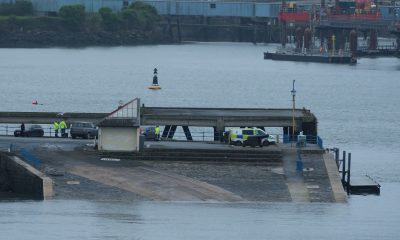
 News6 days ago
News6 days agoSearch for missing teenager Luke continues at Pembroke Dock
-

 News4 days ago
News4 days agoPolice issue update on the search for Luke, missing from Pembroke Dock
-
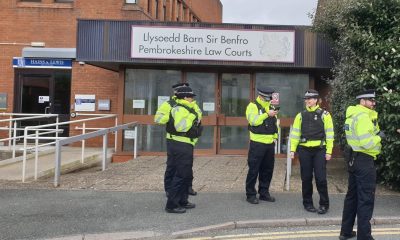
 News6 days ago
News6 days agoMan jailed after scarring police officer in Narberth altercation
-
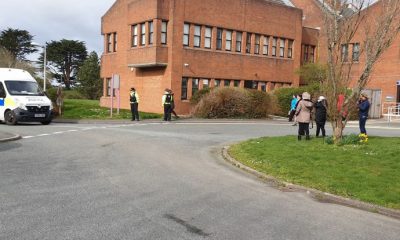
 News6 days ago
News6 days agoPembrokeshire hostel manager narrowly avoids jail sentence
-

 Sport5 days ago
Sport5 days agoHerbrandston Clinch Promotion to Division One
-

 News3 days ago
News3 days ago20mph U-turn: Some roads will return to 30mph following public outcry
-

 Community3 days ago
Community3 days agoMiracle pup finds her forever home after heart-wrenching journey
-
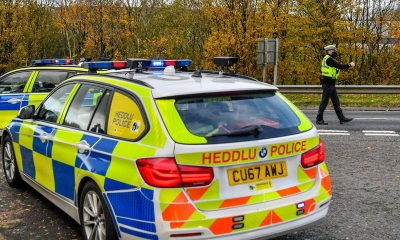
 Crime6 days ago
Crime6 days agoPembrokeshire car salesman caught driving on cocaine









